Duanwu Festival (Duanwujie in Chinese), or Dragon Boat Festival, a traditional celebration first observed over 2,000 years ago in China, is just around the corner. And as Chinese people immerse themselves in the joy of preparing for the jamboree, neighboring South Koreans are braced for their equivalent – Gangneung Danoje Festival.
In early 2005, news that South Korea planned to nominate its Gangneung Danoje Festival as an intangible cultural heritage property to the UNESCO list ignited an uproar in China, as many argued that their intangible heritage was being stolen by South Koreans.
So what is the real relationship between the two festivals?
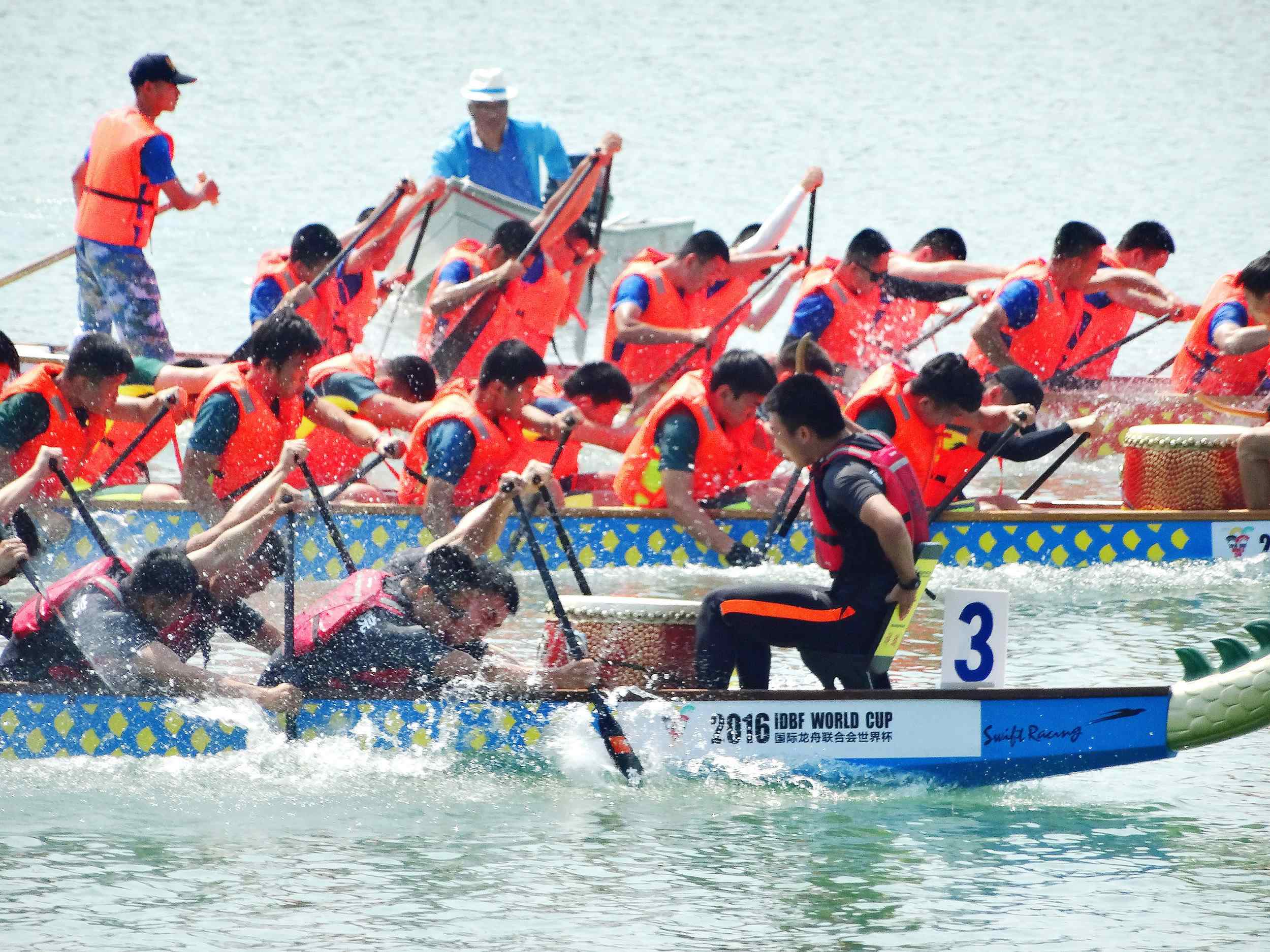
Dragon boat race. /VCG Photo
China’s Duanwu Festival
Falling on the fifth day of the fifth lunar month, Duanwu Festival is a traditional holiday to commemorate the death of ancient Chinese patriotic poet Qu Yuan (340-278 BC), who was also a court minister for the King of the State of Chu, one of the Seven Warring States.
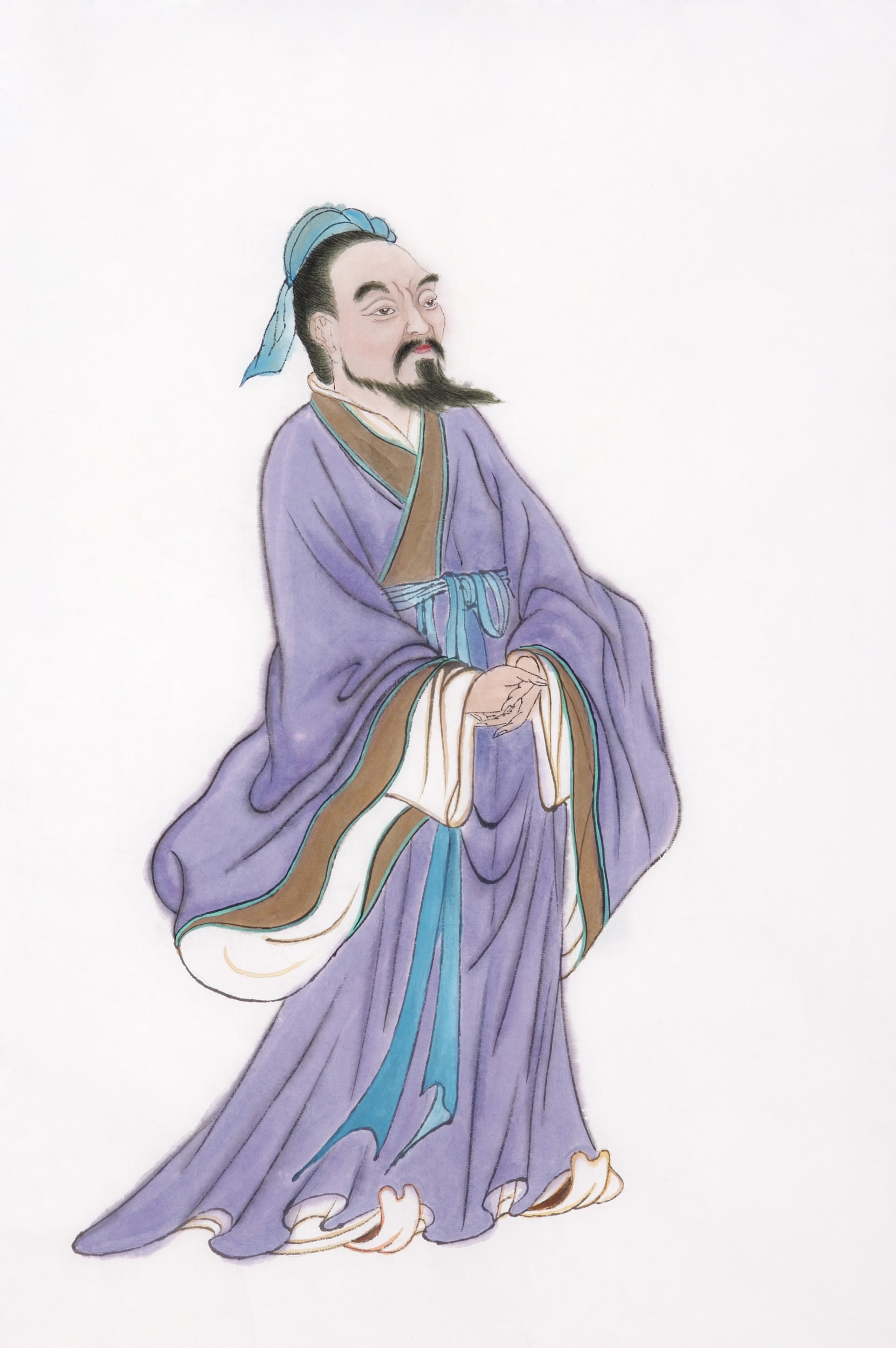
Qu Yuan (340-278 BC), a court minister for the King of the State of Chu, one of the seven Warring States. /VCG Photo
Qu foresaw the dire political fate that awaited his nation and advocated his king form an alliance with the other five states against the increasingly dominant power of the State of Qin. However, the king did not heed Qu’s warnings, and Qu found himself unappreciatively expelled from the court and exiled to a remote region in the south, which is today’s Hunan Province.
Eventually Chu was vanquished by the armies of Qin. In despair at failing to save his nation, Qu was heartbroken and threw himself into the Miluo River near today’s Yueyang in Hunan Province.
After news of his death spread, local people of Chu, who admired Qu greatly, paddled out on their boats to retrieve his body. The people disturbed the water in a bid to stop fish from eating Qu’s body. People also threw zongzi, pyramid-shaped sticky rice dumplings wrapped in reed leaves, into the river to feed the fish and try to keep them away from the corpse, maintaining the integrity of Qu’s body.
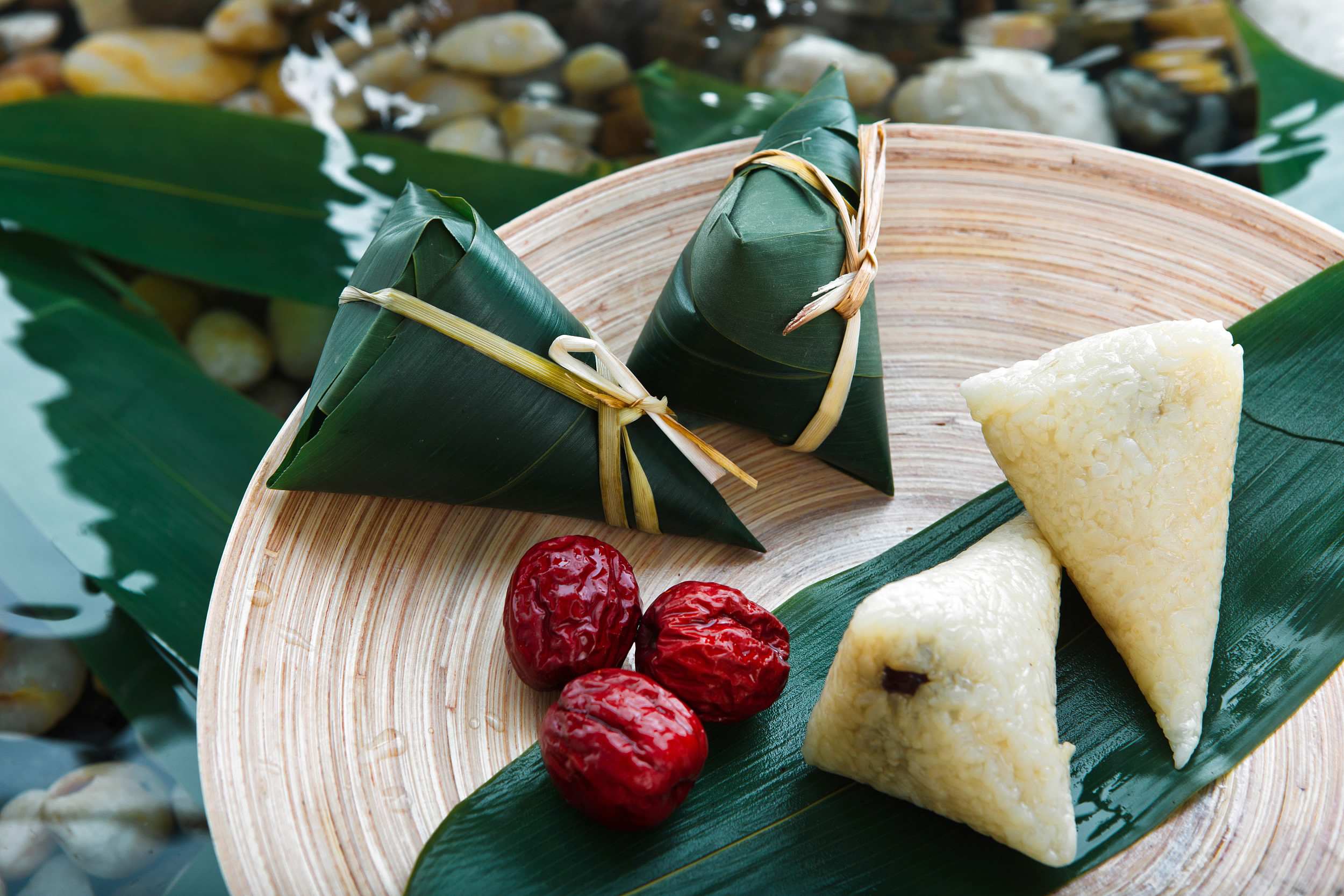
Zongzi. /VCG Photo
And this is said to be the origin of the most performed two customs during the festival, dragon boat racing and eating zongzi.
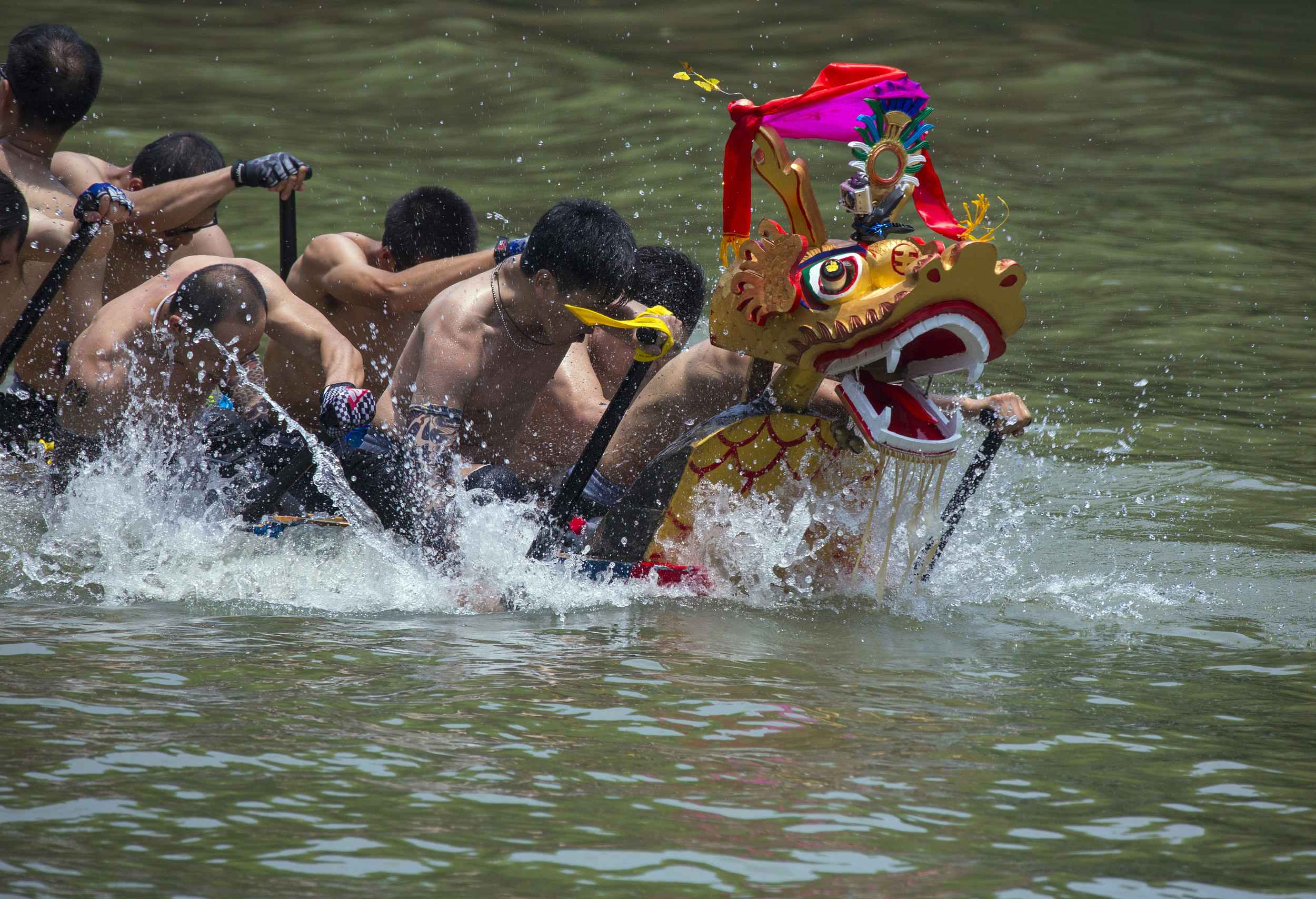
Dragon boat race. /VCG Photo
Ancient Chinese believed the day of Duanwu was unlucky, because it meant hot weather and rampantly spreading diseases were near. Thus dispelling disease and driving out evil became two pervasive themes during the festival.
People would paste on their front doors pictures of Zhong Kui, a legendary Chinese ghost-catcher, wear perfume pouches and hang mugwort and calamus to drive away mosquitoes and other insects. People also drank realgar wine during the festival, which they believed was an antidote for all poisons, and therefore most effective to drive away evil spirits and kill insects.
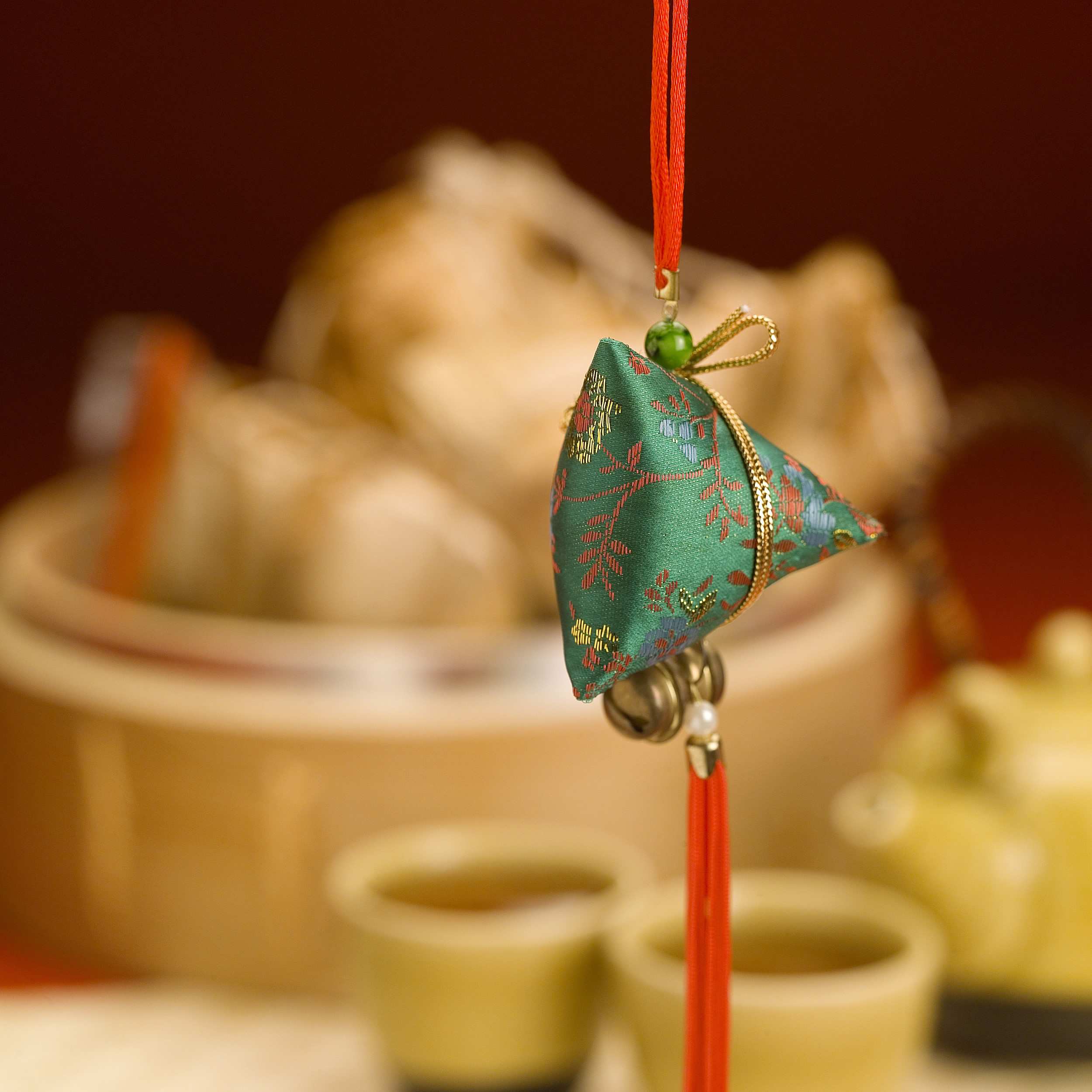
A perfume pouch. /VCG Photo
On May 20, 2006, Duanwu Festival was selected into the first batch of China's National Intangible Cultural Heritage items. In 2008, it was first celebrated as a public holiday in China and was finally added to the UNESCO World Intangible Cultural Heritage List on September 30, 2009.
South Korea's Gangneung Danoje Festival
The Gangneung Danoje Festival mainly takes place in the town of Gangneung and its surrounding areas. Also culminating on the fifth day of the fifth month according to the lunar calendar, the celebration usually lasts for as long as a month.
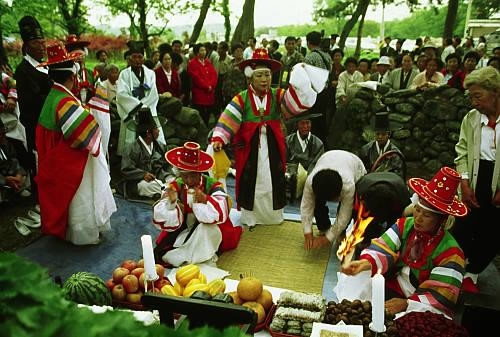
South Koreans perform a shamanistic ritual during the Gangneung Danoje Festival. /UNESCO Photo
The festival includes a shamanistic ritual on the Daegwallyeong Ridge, which pays tribute to the mountain deity as well as male and female tutelary deities. It encompasses traditional music and Odokddegi folk songs, the Gwanno mask drama, oral narrative poetry, and various popular pastimes.
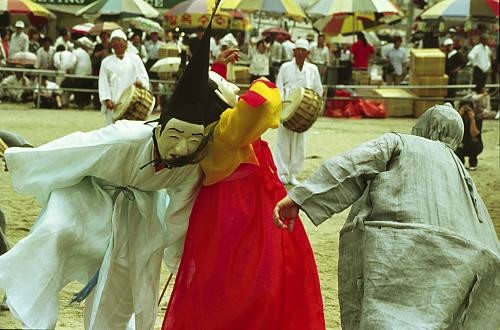
South Koreans perform the Gwanno mask drama during the Gangneung Danoje Festival. /UNESCO Photo
Traditionally, sacred liquor is drunk and Surichiwi rice crackers are eaten during the festival.
The Gangneung Danoje Festival was listed in 1967 as the 13th indigenous cultural item to be classified as a major intangible cultural asset of South Korea. And it was inscribed as part of South Korea's Masterpieces of the Oral and Intangible Heritage of Humanity by UNESCO in November 2005.
Historical links between two festivals
The Korean Peninsula has been a good friend to China since ancient times. Records suggest that interactions promoting cultural integrity and prosperity between the two countries date back 3,000 years.
Documents in South Korea’s UNESCO application filing showed that the Gangneung Danoje Festival was spread from China to the country 1,500 years ago.

A man hangs mugwort beside his the front door during China’s Duanwu Festival. /VCG Photo
In ancient Korean books, records of the Gangneung Danoje Festival were written in Chinese, instead of pure Korean. And the country’s 19th century book of customs Dongguksesigi stated that the customs of Gangneung Danoje Festival basically followed those from China’s Han Dynasty (202 BC – 220 AD).
Gangneung in Gangwon-do prefecture, the place that the Danoje Festival is most celebrated, is located on the eastern coast of South Korea. It has a number of places with names borrowed from ancient Chu, the state where Qu lived.
For example, South Korea’s Dungjungchuwal is named after Dongting Lake in central China’s Hunan Province. Ancient Chu State and Gangwon area in South Korea both have rich traditions of shamanism, and some scholars in China said that Gangwon Shamannism came from Chu-Miao traditions.
The similarity between the Danoje and Duanwujie also makes it clear that the nomenclature of this festival did originate in China, which has also been accepted by South Korean cultural heritage officials.
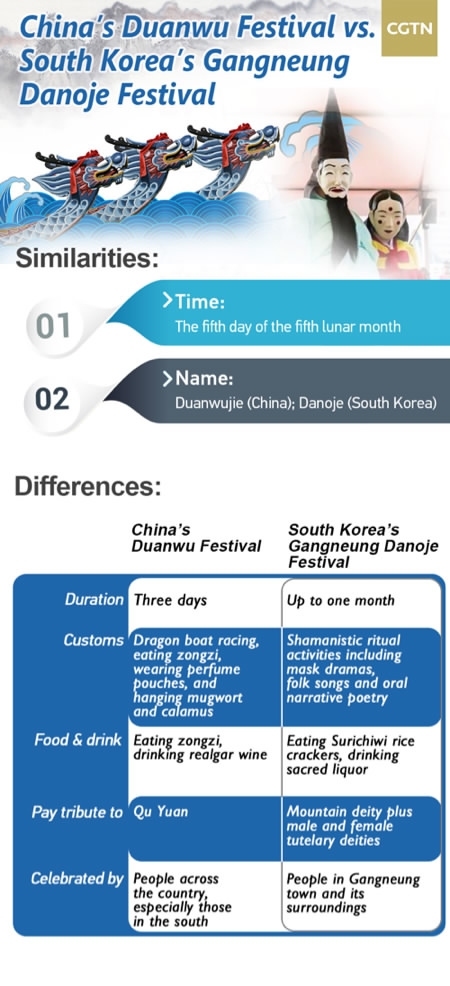
China's Duanwu Festival vs. South Korea's Gangneung Danoje Festival./ CGTN Infographic
However, once introduced to the Korean Peninsula, the Gangneung Danoje Festival developed along its own lines for the subsequent millennium and more, and lots of distinctive local customs were added later. It has now evolved into a festival quite different from that in China.
Therefore, the two festivals enjoy both connections and distinctions. The fact that Gangneung Danoje Festival originated from China is not a negation that the South Korea festival has developed its own cultural independence. Does it really matter who the festival belongs to?
Now that Duanwu Festival is drawing near, the best ownership declaration might be to go and see a dragon boat race, eat some zongzi and hang some calamus.









